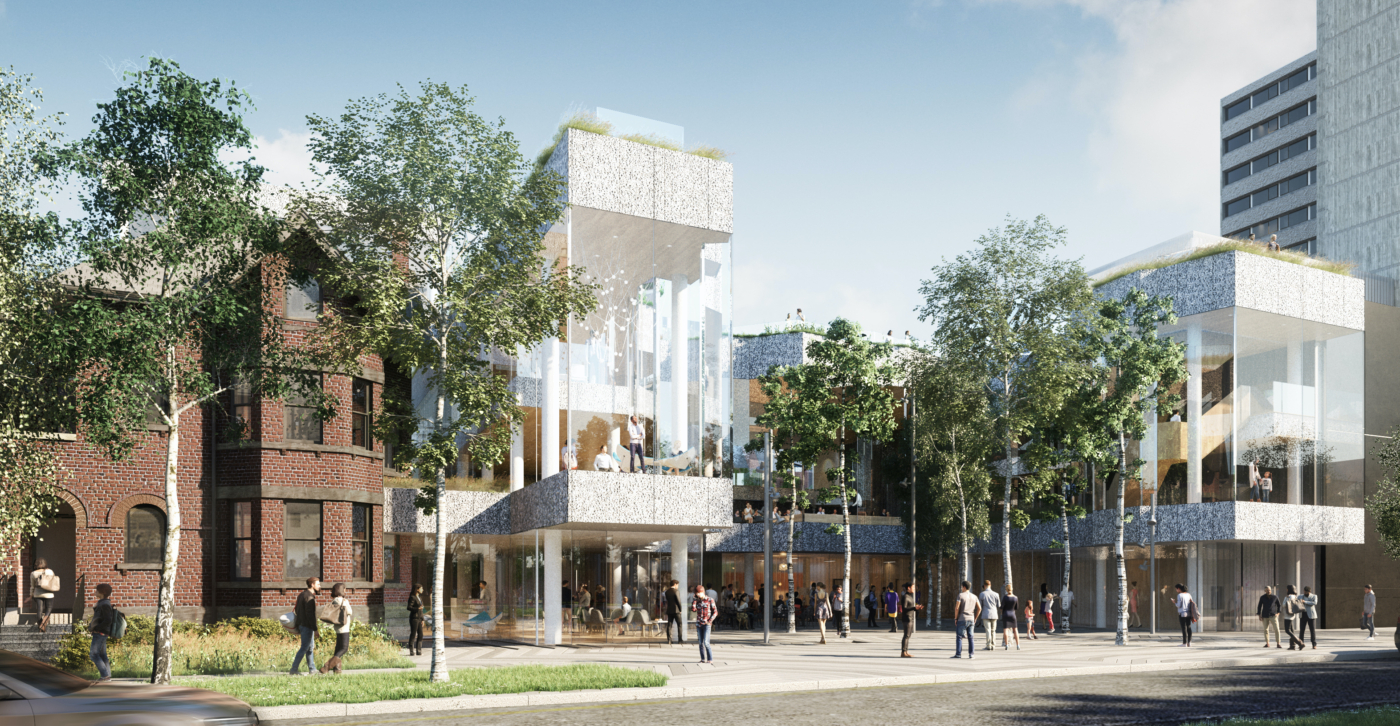A new Estonian community center KESKUS to rise in the heart of Toronto

In downtown Toronto, a new Estonian community center called KESKUS is rising. This building, with an inner courtyard shaped like a map of Estonia, will host a variety of organizations, such as an Estonian school, kindergarten, and folk dance groups. KESKUS is looking for generous Estonians willing to support the construction through donations. Ellen Valter, one of the project’s leaders, says that KESKUS plays an essential role in preserving Estonian culture in North America and Canada.
Toronto as the Center for Estonians in Canada
According to Ellen Valter, around 25,000 Estonians live in Canada, with a third of them in Toronto. Estonian culture has thrived in Toronto since the end of World War II when the first major wave of immigrants established a bank, camps, schools, choirs, dance groups, and regional societies. “Toronto became the capital of Estonians abroad from the time the first global Estonian festival, ESTO, was held here in 1972,” said Valter.
Over the years, Estonian community activities have evolved in Toronto. Today, Estonians in the city can join student fraternities, sing in four choirs, and participate in folk dance groups. Estonian-speaking residents also have access to legal services and can arrange insurance. New initiatives are continually launched, such as a youth film camp where young people can learn about Estonian culture and filmmaking during school breaks. “We need to create a variety of engaging activities to appeal to today’s Estonian and spark interest in Estonian identity. I’d say that being Estonian is an inner feeling, but it needs a way to be expressed,” Valter explained.
KESKUS Reflects the Story of Estonia in Toronto’s Cultural Hub
Toronto’s original Estonian House was built as a school in 1896 and acquired by the Estonian community in 1960. The old building deteriorated over time, and the community lacked funds for renovation, leading them to decide on building a new center. Valter shared that the new facility is being constructed in Toronto’s cultural corridor, home to embassies, museums, and the University of Toronto. Next to KESKUS is the 18-story Tartu College, a student residence that also houses Estonian fraternities, sororities, and societies.
According to Valter, it has been 70 years since an Estonian community abroad last built a new center. “The first was built in Riga in 1913, the second in Australia in 1940, and the third in Lakewood in 1947. All other Estonian centers were repurposed from theaters or school buildings. Toronto’s KESKUS is the fourth such Estonian community center outside Estonia,” said Valter. She added that the project’s original name, International Estonian Centre, was changed to KESKUS to pique local curiosity.
Valter explained that KESKUS has a unique design, featuring a courtyard shaped like the map of Estonia and glass walls symbolizing Estonia’s openness. The architect, Alar Kongats, is also Estonian. The building’s varied functions add to its distinctiveness, with plans for a library, an Estonian food restaurant, spaces for choir rehearsals, the kindergarten’s traditional fashion show, and events such as Arvo Pärt concerts. “Estonians will fill KESKUS with their activities, and whenever it’s not in use by Estonians, it will be available for rental. It’s an ideal space for weddings and celebrations,” Valter explained.
KESKUS Calls on Estonians for Support
Valter highlighted that KESKUS was built in Toronto due to the community’s strong will and ambition. The total cost of the building and planning is around 50 million dollars, funded in part by donations from Estonians and the Canadian government. However, more funding is still needed. Valter noted that price increases, driven by the pandemic and international conflicts, have affected the budget. “The support from Estonians so far has been heartwarming, with over 20.7 million dollars donated globally. However, we are still three million dollars short of opening,” Valter described.
According to Valter, there is a vast Estonian network worldwide, working together to preserve Estonian identity. “We celebrate the fact that we exist and all want Estonia to succeed. It is the will and donations that will help us overcome the financial challenge. I sincerely hope that Estonians in Estonia can find a way to join us in spirit and support this global effort,” said Valter. She calls on everyone to assist and support KESKUS financially, with more donation information available on their website.
You can follow KESKUS and activities of the global Estonian community on social media using the hashtag #everyfifthestonianlivesabroad, which raises awareness about the size and significance of the global Estonian community. Ellen Valter also invites you to subscribe to the KESKUS newsletter to keep up with its developments.
Anette Ama